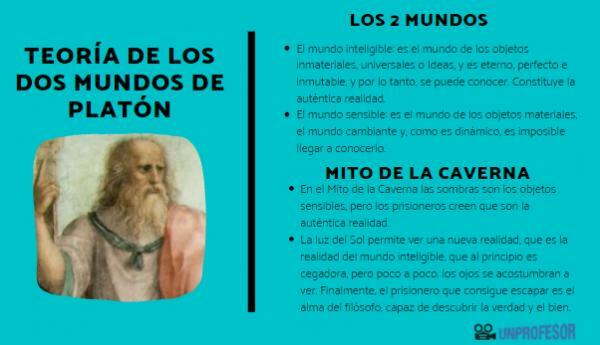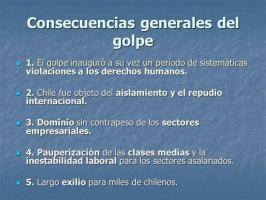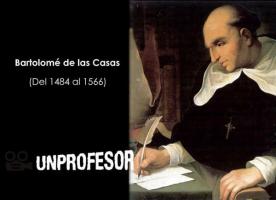Plato's THEORY of the two WORLDS
For Paula Rodriguez. Updated: 12 August 2020

In this lesson from a TEACHER we explain what the Plato's theory of the two worlds, according to which, there are two completely different realities. There is in the universe, a material structure and an immaterial one, as Pythagoras defended when affirming that the human being was composed of body and soul. Well, for Plato, there are two worlds. On the one hand, there would be the intelligible world or world of ideas, and on the other, the sensible world, a mere copy of the first. To better explain his theory, the Greek philosopher turns to the Myth of the Cave. If you want to know Plato's theory of the two worlds, he continues reading this lesson.
Plato is going to defend the existence of two worlds or two totally different realities:
- The intelligible world: it is the world of immaterial, universal objects or Ideas, and it is eternal, perfect and immutable, and therefore, it can be known. It constitutes the true reality. It is made up of universal souls and mathematical entities.
- The sensible world: it is the world of material objects, the changing world of which Heraclitus speaks, and due to becoming, because it is dynamic, it is impossible to get to know it. The sensible world is subject to change, it is corruptible, subject to generation and corruption. It is only a copy of the world of Ideas, which are material objects.
What Plato means is that the chairs, tables and all the material objects that we find in the sensible world, do not They are real, but copies of the authentic reality, of the Ideas, universal and eternal of the intelligible world, perfect and immutable.
But how are these two worlds related to each other? We explain it to you below.
On the one hand, Plato affirms the existence of the Demiurge that he creates the sensible world out of the intelligible world, which is perfect and immutable. But the sensible world is just an imperfect copy, which is subject to space-time change.
The one in Athens does not clarify too much who this character is, whom he compares to a librarian who creates a perfect library from an ideal model. But time ends up corrupting the books, which no longer follow an order. The library has lost its perfection, it has changed.
On the other hand, Plato assures that there is a similarity relationship between the objects of the sensible world and the objects of the intelligible world, which the philosopher calls Participation. Material objects participate in Ideas, and the more the object resembles the universal, then it can be said that it is more or less perfect.
Plato establishes a hierarchy of worlds. The authentic reality is not the sensible reality but the intelligible one. The Sensible World is only a copy of the Intelligible World. To better explain how these two worlds are related to each other, Plato, in La República, exposes the Myth of the Cave, which we offer you below.
"Inside a cave some prisoners are locked up from birth, and they are tied in such a way that all they can see is a wall in front of them in which a series of shadows are reflected. It is the only thing they have seen, so they think it is the true reality, that they are only shadows and even themselves, they are only shadows.
One day a prisoner can escape and leaves the cavernAt first, the sunlight blinds him, but little by little, he gets used to the new intensity of the light and discovers a new world, much more perfect and more real. He is captured again, and tries to explain to his companions that these shadows that he until then believed to be real, are not real, since the authentic reality is another more perfect world, and that is the cause of these shadows, but it does not they believe. "
In the Myth of the Cavern the shadows are the sensible objects, but the prisoners believe that they are the true reality. Sunlight allows us to see a new reality, which is the reality of the intelligible world, which at first is blinding, but little by little, the eyes get used to seeing. Finally, the prisoner who manages to escape is the soul of the philosopher, capable of discovering the truth and the good.
Influence of Platonic dualism
Descartes, in the seventeenth century, would speak of the difficulty in distinguishing wakefulness from sleep, two very different realities. At present, different films dealing with this same subject have been brought to the big screen, from the existence of two different realities, such as The Truman Show, Matrix or Level 13, among others.



